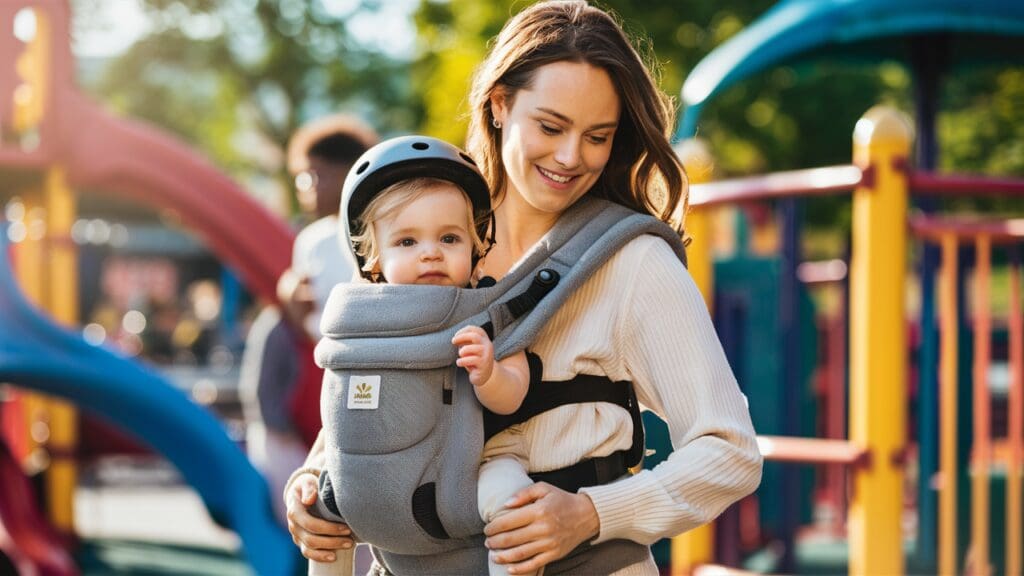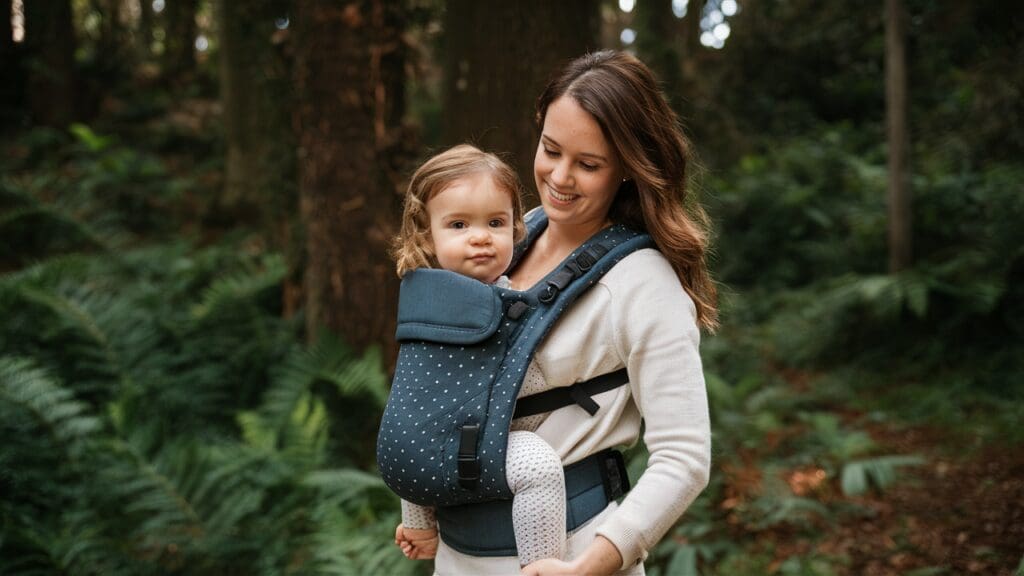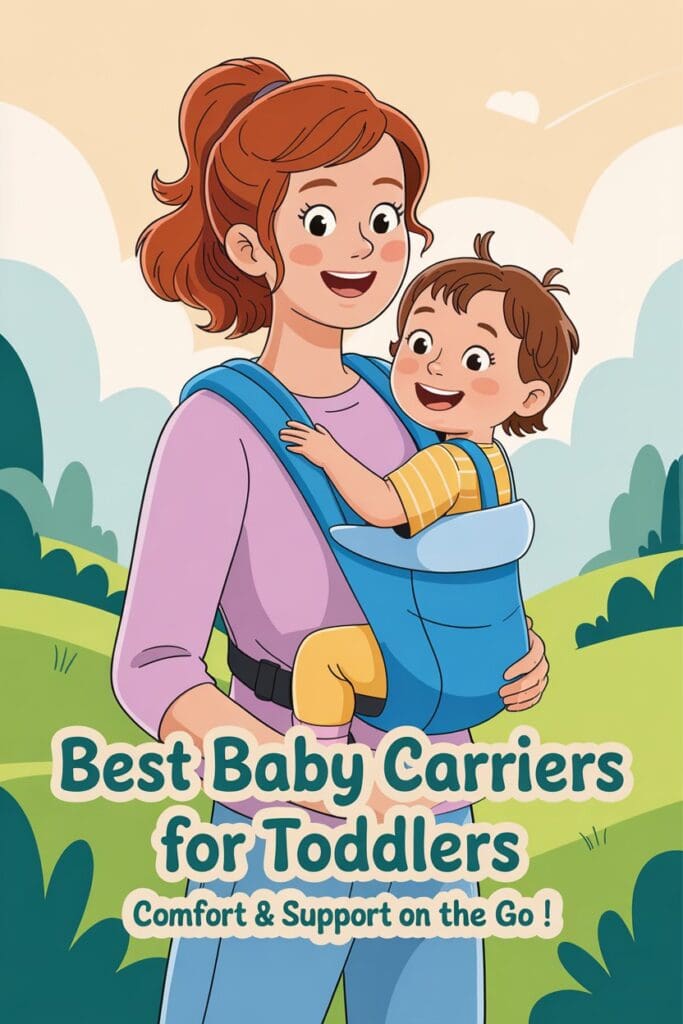Best Toddler Carriers
As a mom of three busy little ones, finding the right toddler carrier was a game-changer for me.
I remember the first time I took my middle child to the zoo—just me, a stroller, and a squirmy toddler who refused to sit still.
By the end of the day, I had pushed the empty stroller for miles and ended up carrying him in my arms half the time.
My shoulders were aching, my back was sore, and I knew I needed a better solution if I wanted to keep up with his adventurous spirit.
That’s when I decided to invest in a good toddler carrier. With the right carrier, I could comfortably tote him around without sacrificing my mobility or energy.
I’ve rounded up the best options to help you find your perfect fit, so you can keep your little explorer happy and your hands free.
This post may contain affiliate links. Full privacy policy and disclosure here.

Best Toddler Carriers
1. Ergobaby Omni 360 Baby Carrier
The Ergobaby Omni 360 is a game changer for parents seeking versatility and comfort.
With its ergonomic design and adjustable shoulder straps, it provides excellent weight distribution, making it suitable for long days out and about.
This soft-structured carrier offers multiple carry positions, including front carry, back carry, and hip carry, ensuring that you can find the perfect fit for you and your little one.
Plus, it’s suitable for newborns without the need for an infant insert, making it a great option for new parents.
2. Osprey Poco Plus Child Carrier
For families who love spending time in the great outdoors, the Osprey Poco Plus is a must-have.
This hiking carrier features a built-in sunshade to protect your little one from harsh rays and offers ample storage space for essentials like snacks and water bottles.
With adjustable straps and a comfortable waist belt, it’s designed to provide maximum comfort on longer hikes, making it the best choice for adventurous parents and their little explorers.
3. LÍLLÉbaby CarryOn Toddler Carrier
When it comes to carrying bigger kids, the LÍLLÉbaby CarryOn is a great choice.
With its sturdy construction and adjustable straps, it’s designed to comfortably accommodate children up to 60 pounds, making it ideal for older babies and young children alike.
The ergonomic design and lumbar support ensure that both you and your child stay comfortable, whether you’re running errands or exploring the great outdoors.
4. Ergobaby 360 All-Position Baby Carrier
Another fantastic option from Ergobaby is the 360 All-Position Baby Carrier.
With its breathable fabric and adjustable straps, it’s perfect for warm weather outings and longer excursions.
This carrier offers multiple carry positions, including front, back, and hip carry, allowing you to switch it up based on your child’s preferences and your own comfort.
Plus, it’s machine washable for easy cleaning, making it a convenient choice for busy parents.
5. Deuter Kid Comfort Child Carrier
For parents who prioritize back support during longer outings, the Deuter Kid Comfort is an excellent choice. With its ergonomic design and padded hip belt, it provides optimal weight distribution, reducing strain on your back and shoulders.
The breathable mesh panel keeps both you and your child cool and comfortable, while the storage pockets offer convenient storage for essentials like snacks and toys.
Whether you’re hiking or simply running errands around town, this carrier has you covered.

Finding the Perfect Fit
When choosing the best toddler carrier for you and your little one, it’s essential to consider factors such as comfort, support, and versatility.
Look for carriers with adjustable shoulder straps and waist belts to ensure a proper fit for your body type. Additionally, consider the age and weight of your child, as well as the types of activities you’ll be doing together.
Whether you prefer a soft-structured carrier, a wrap carrier, or a backpack carrier, there’s a perfect option out there for every parent and child duo.
FAQ
What is the weight limit for toddler carriers?
Most toddler carriers can hold kids up to 45–60 pounds. Always check the manufacturer’s weight limit to ensure safety and comfort.
Can I carry a 3-year-old in a baby carrier?
Yes! Many carriers are designed specifically for toddlers and even preschoolers. Look for carriers with strong support, a wide seat base, and padded straps.
What’s the best carrier for hiking with a toddler?
Structured backpack carriers like the Deuter Kid Comfort are ideal for hiking, thanks to their support, storage, and frame design.

Bottom Line
Investing in the best toddler carrier is a small price to pay for the comfort and convenience it provides during those precious moments spent with your little one.
Whether you’re running errands at the grocery store or embarking on a long hike in the great outdoors, having the right carrier can make all the difference.
With options like the Ergobaby Omni 360, Osprey Poco Plus, and LÍLLÉbaby CarryOn, you can enjoy countless adventures with your child by your side. So why wait? Find your perfect carrier today and start making memories that will last a lifetime.
👉 Download the Free Toddler Carrier Comparison Cheat Sheet!
Not sure which carrier is best? Grab this printable to compare top options and pick the perfect fit for your little one.
Pin this post!

